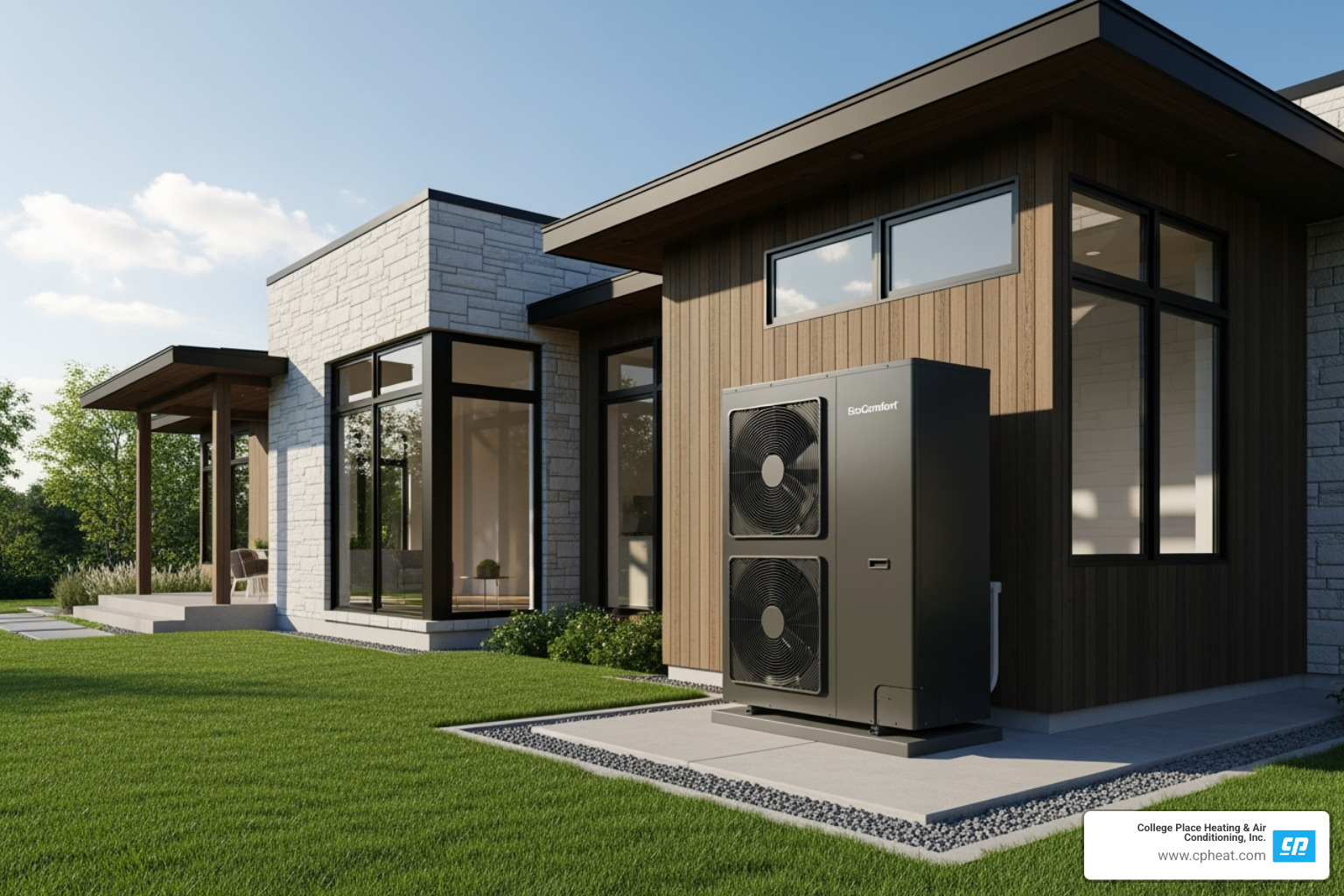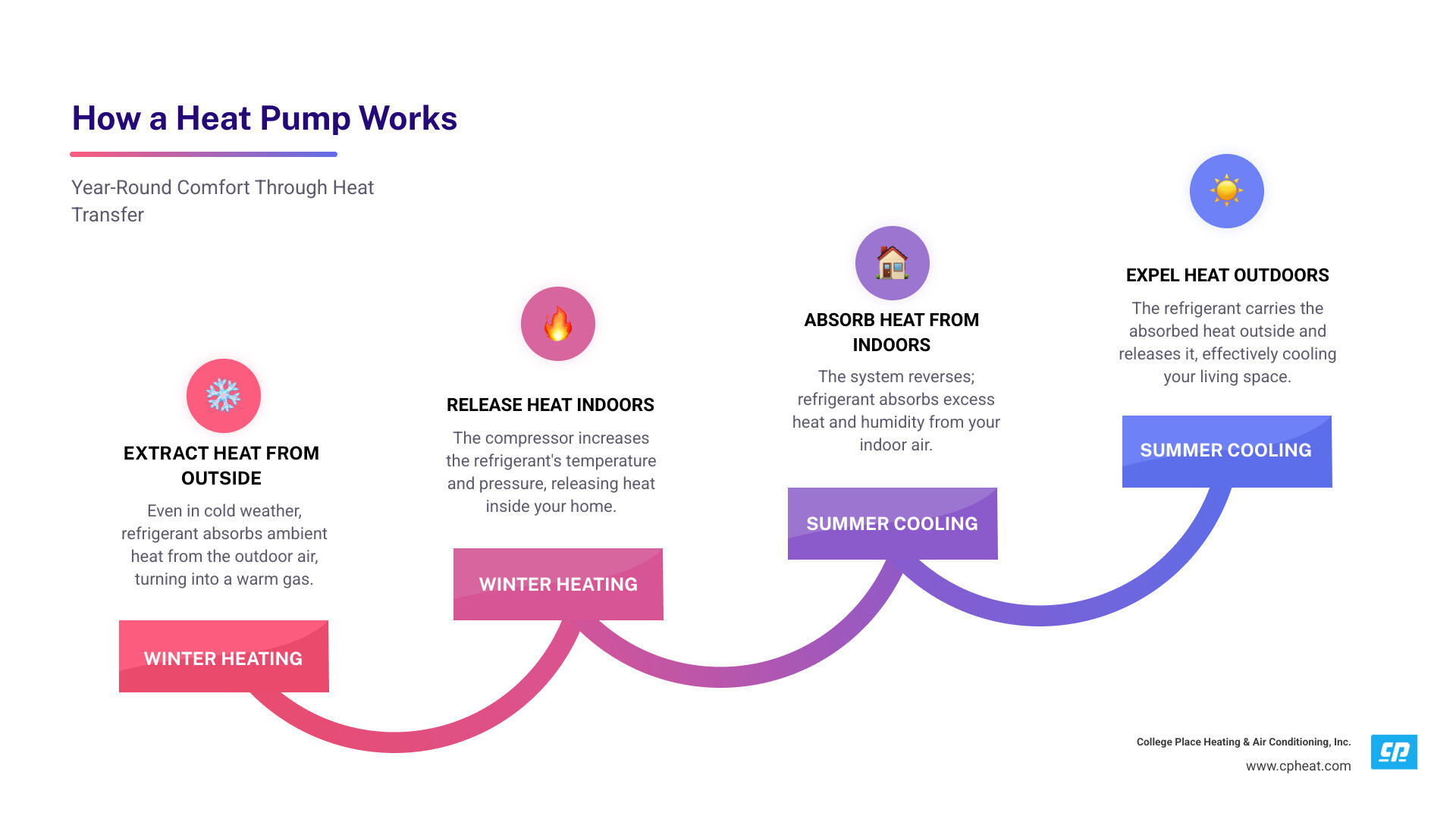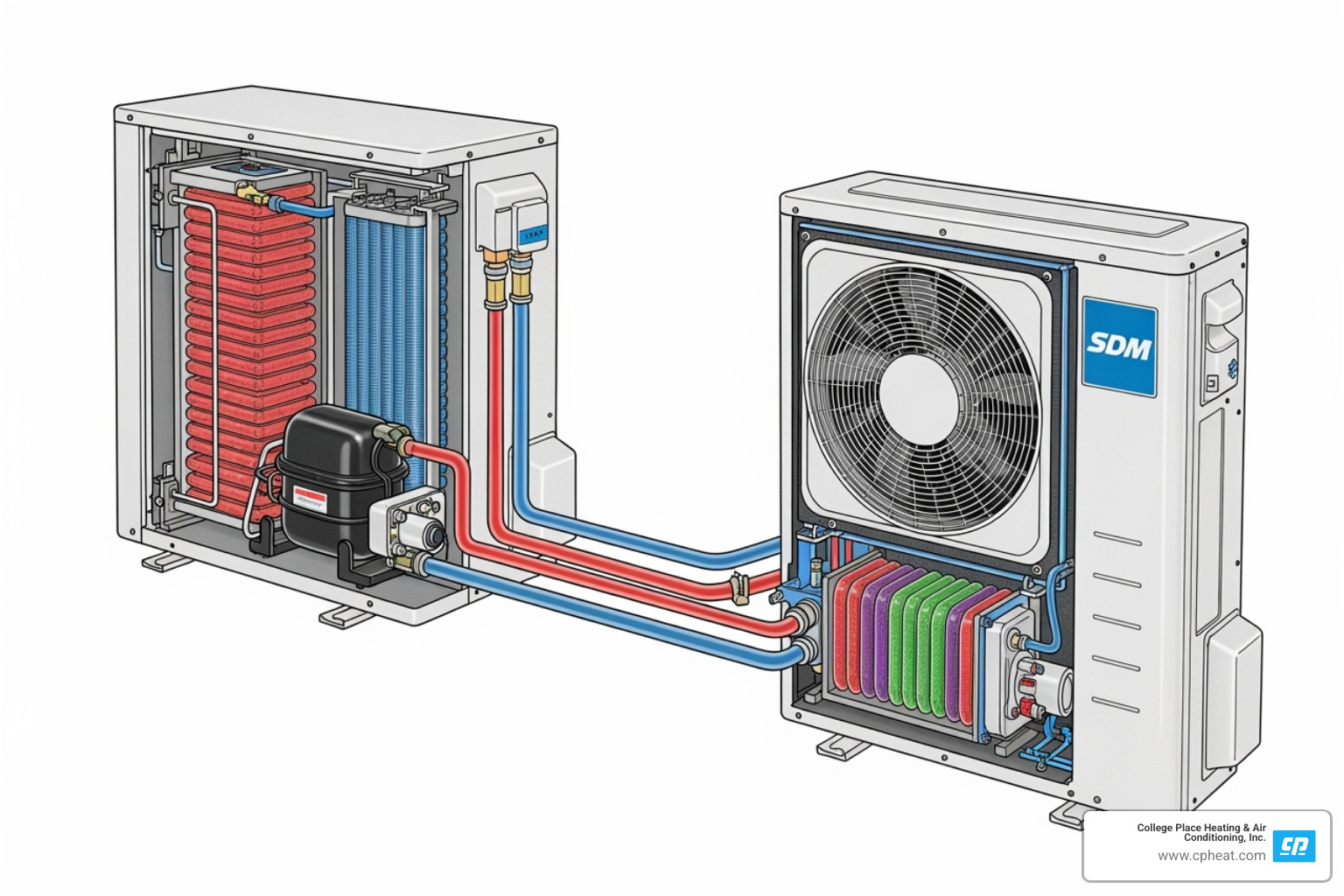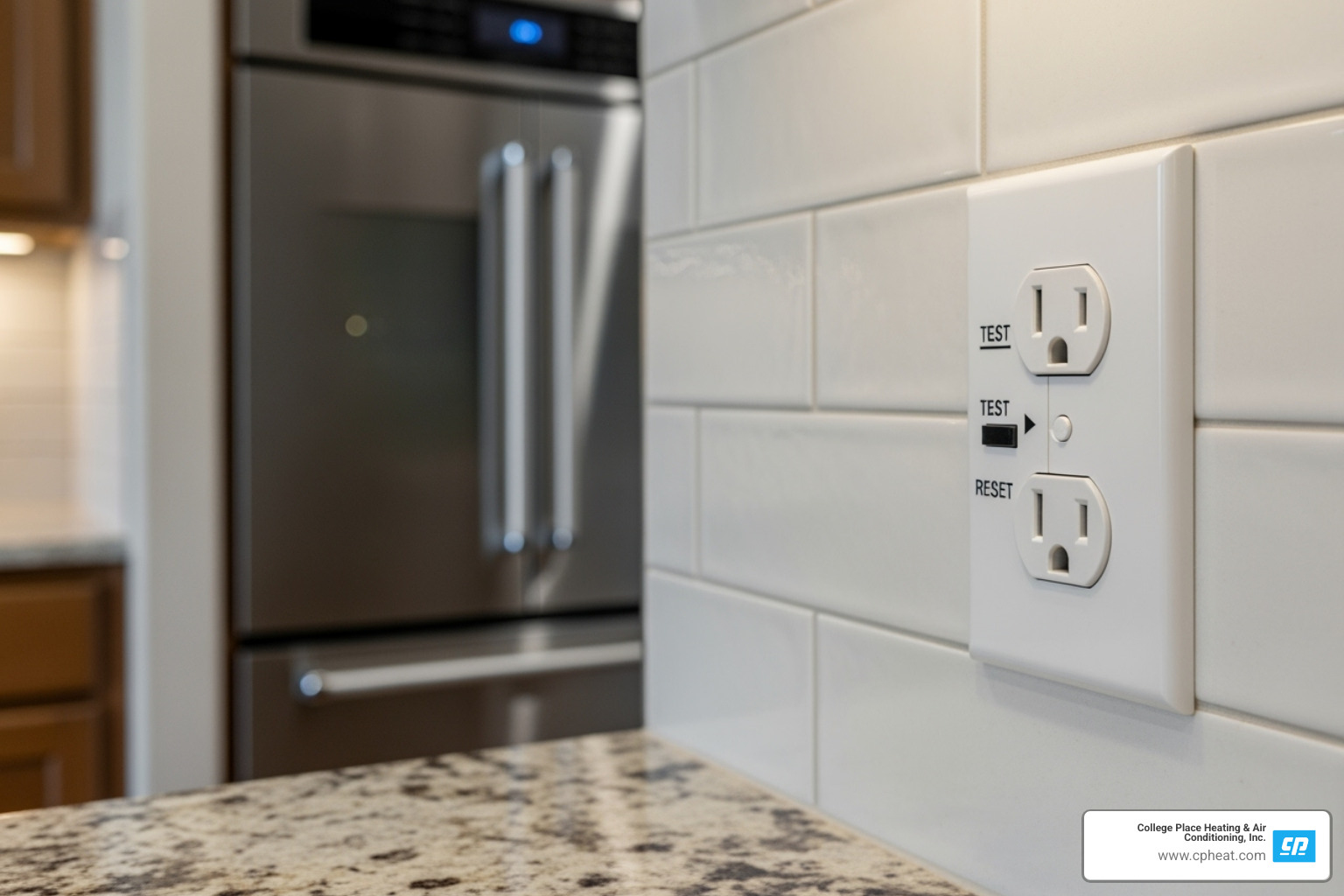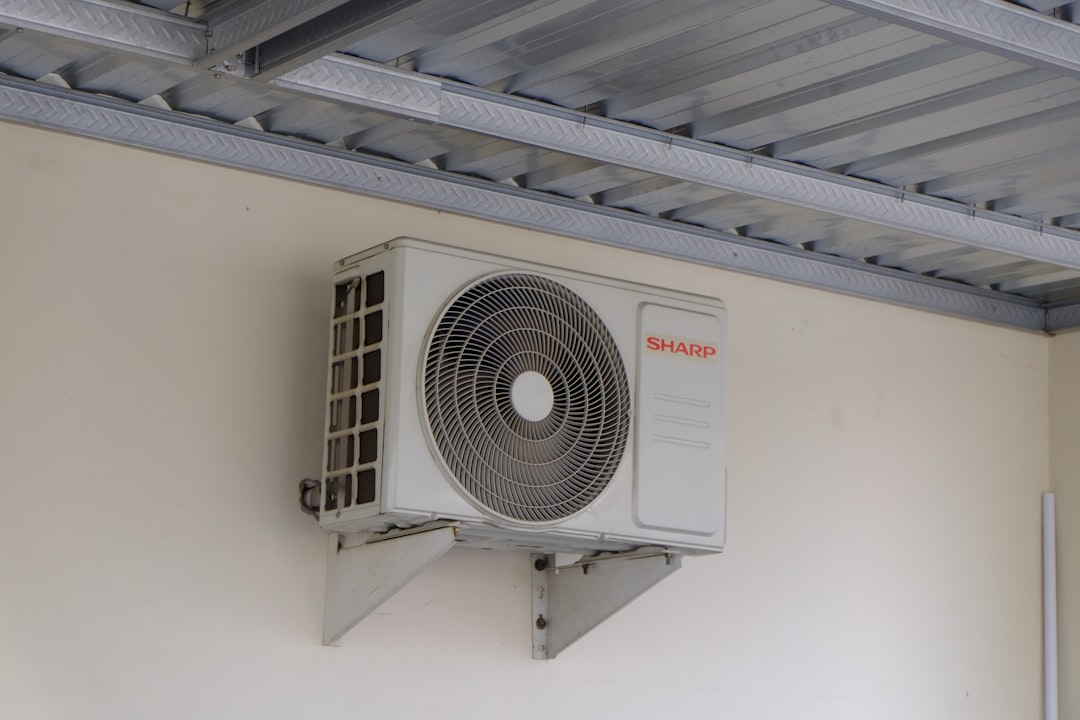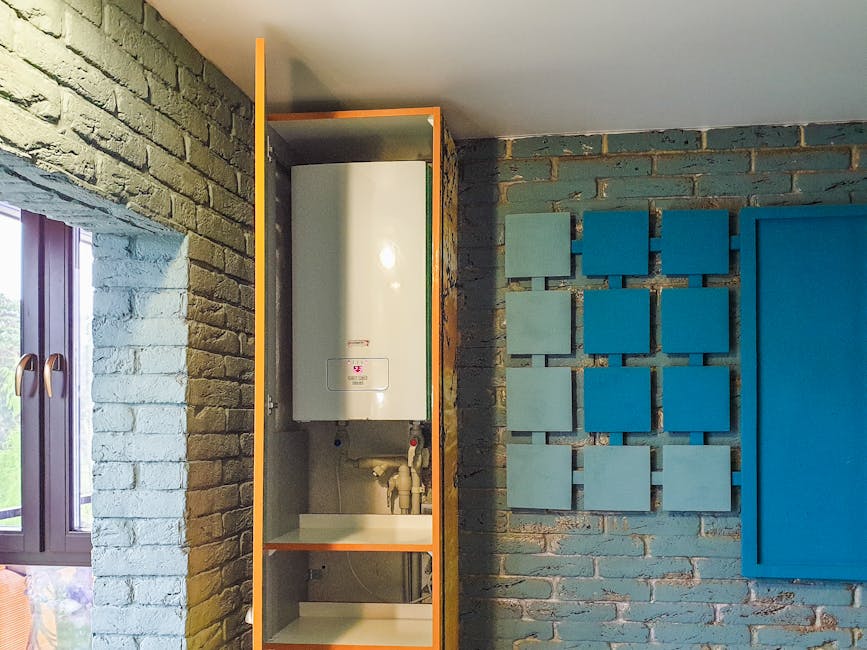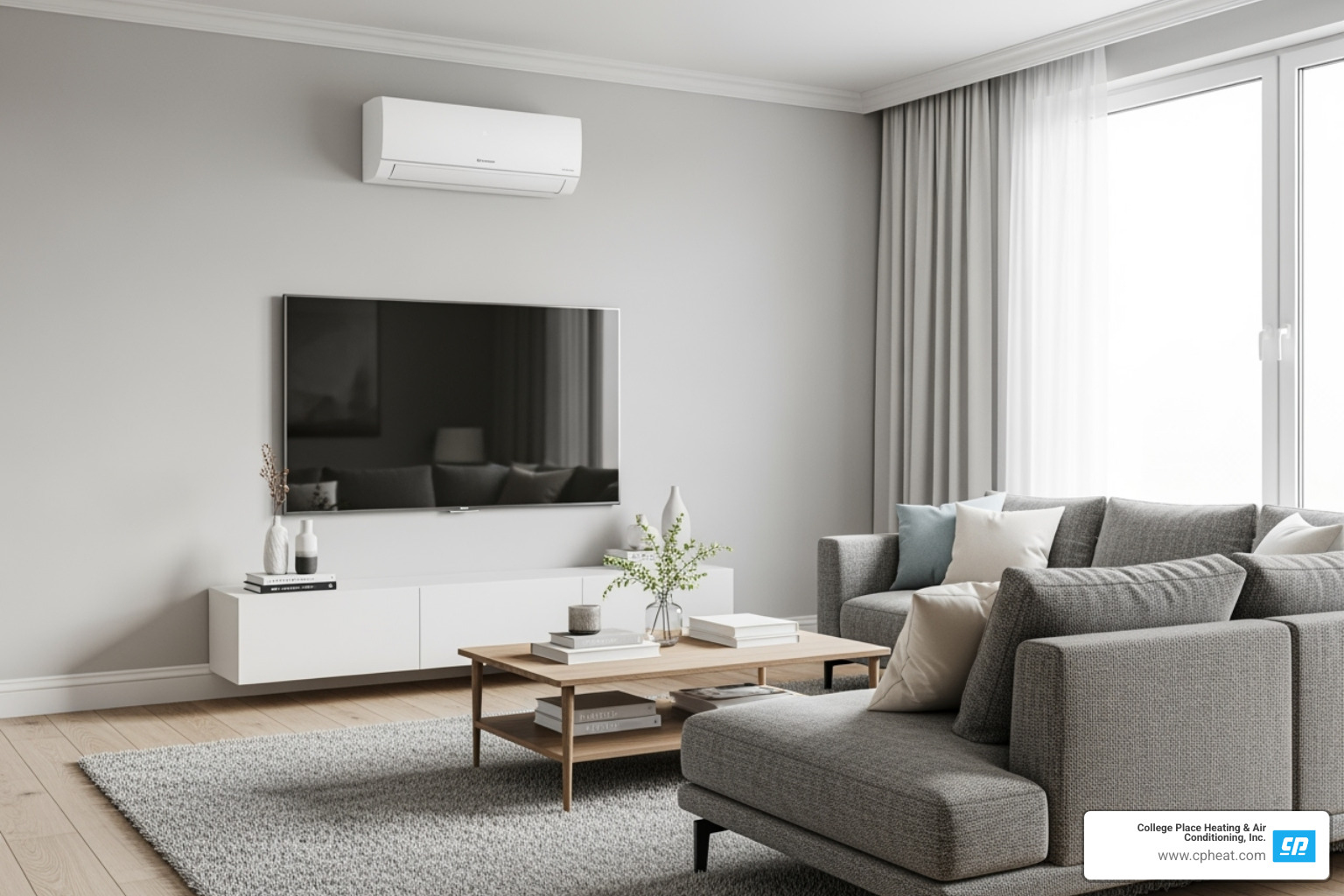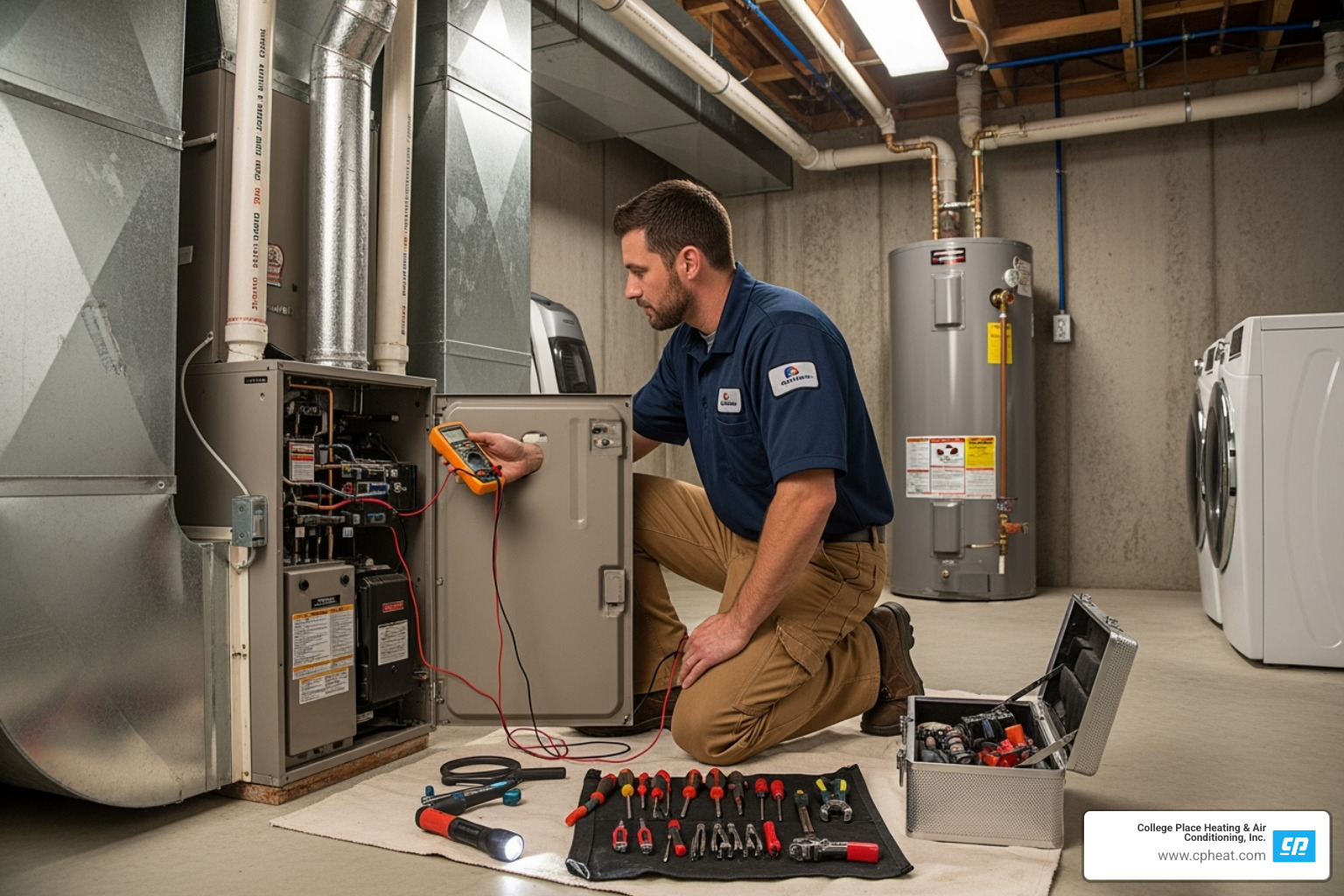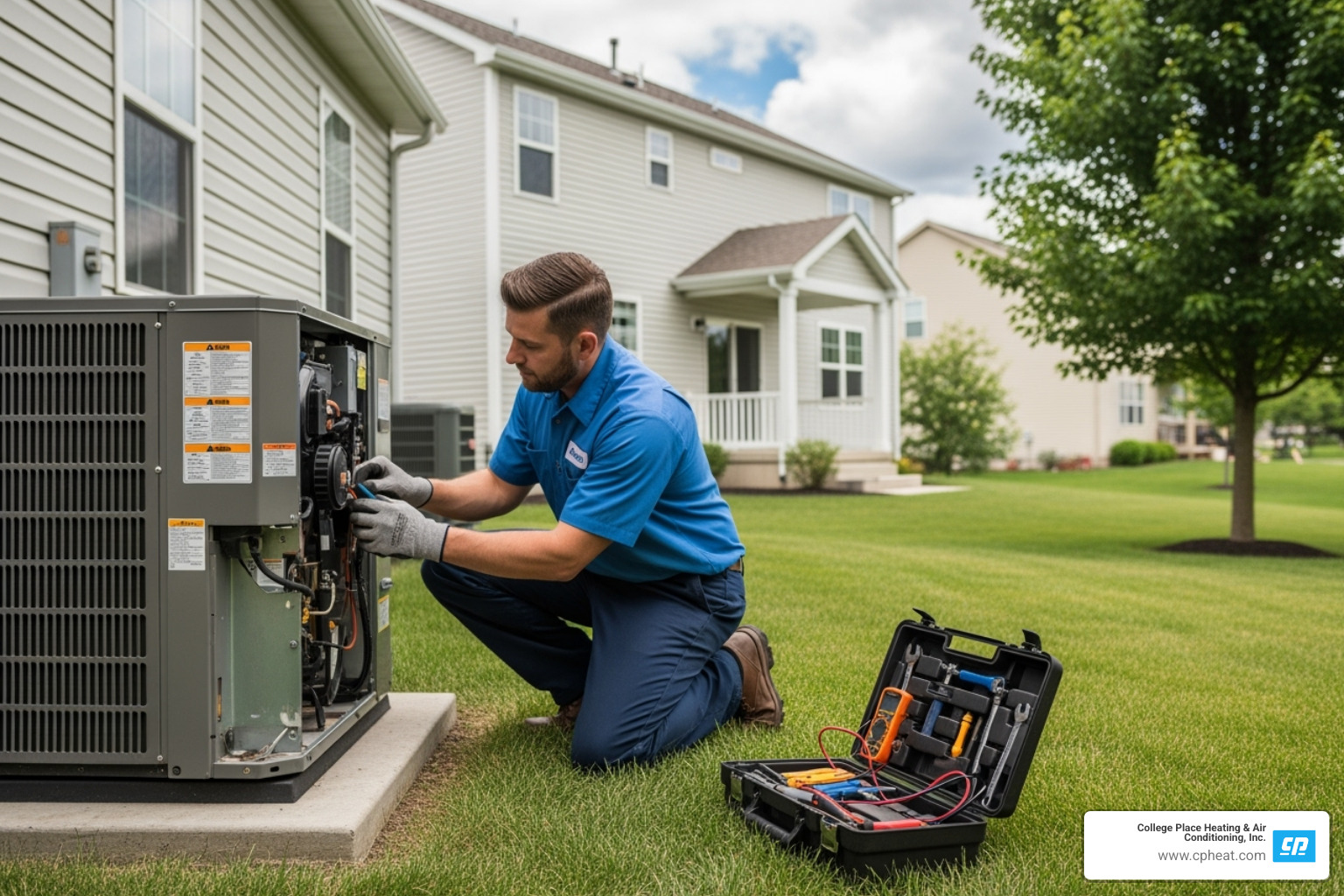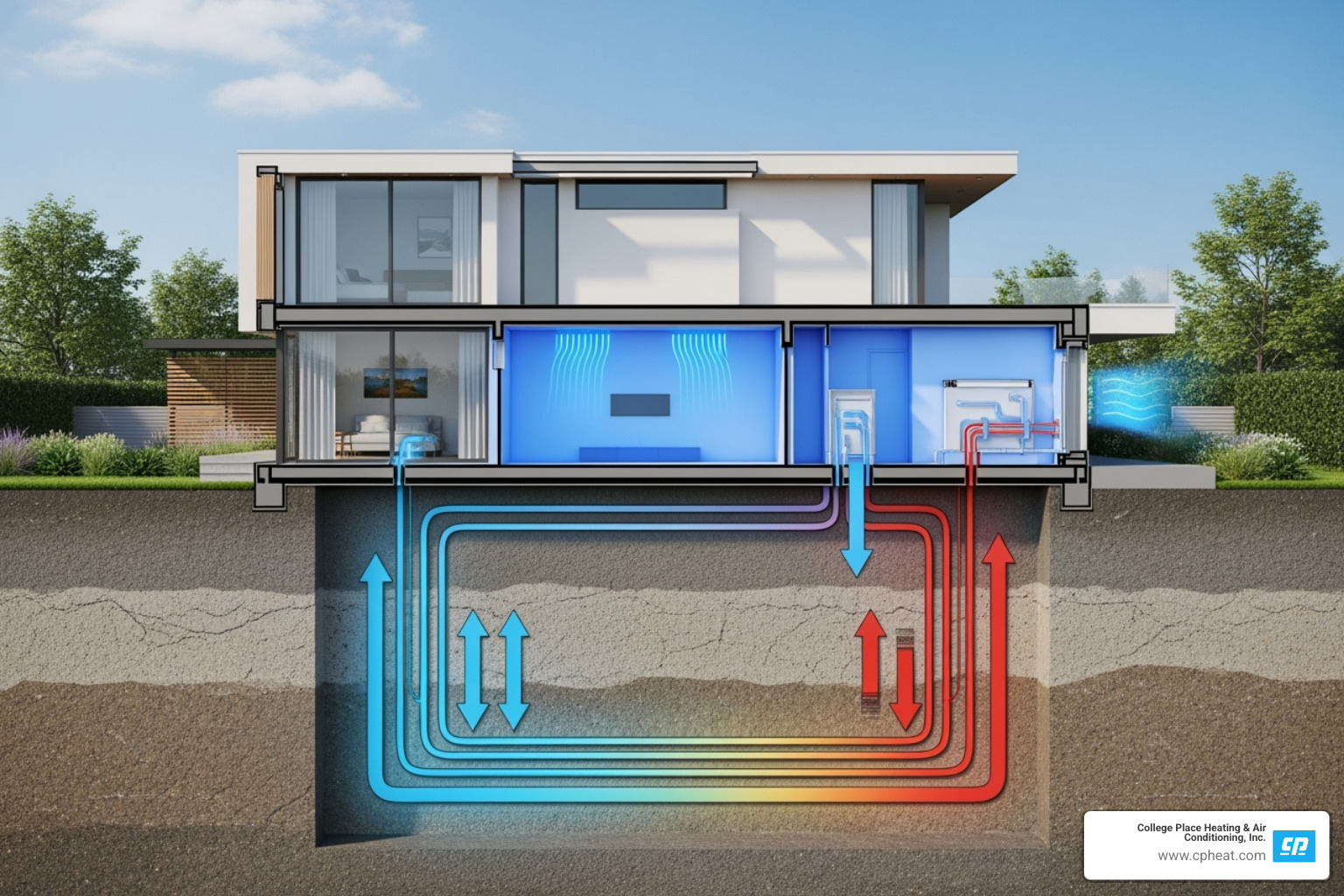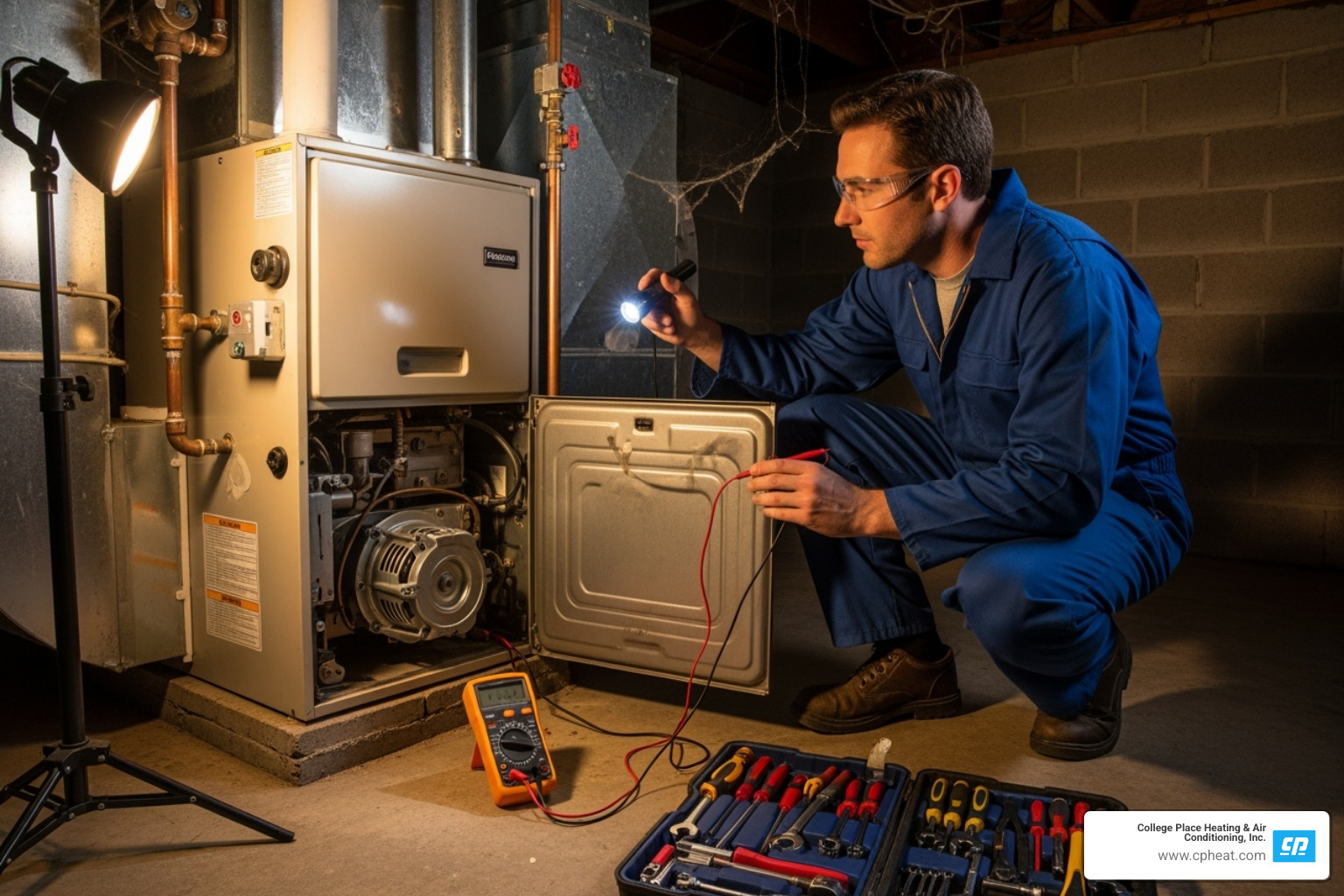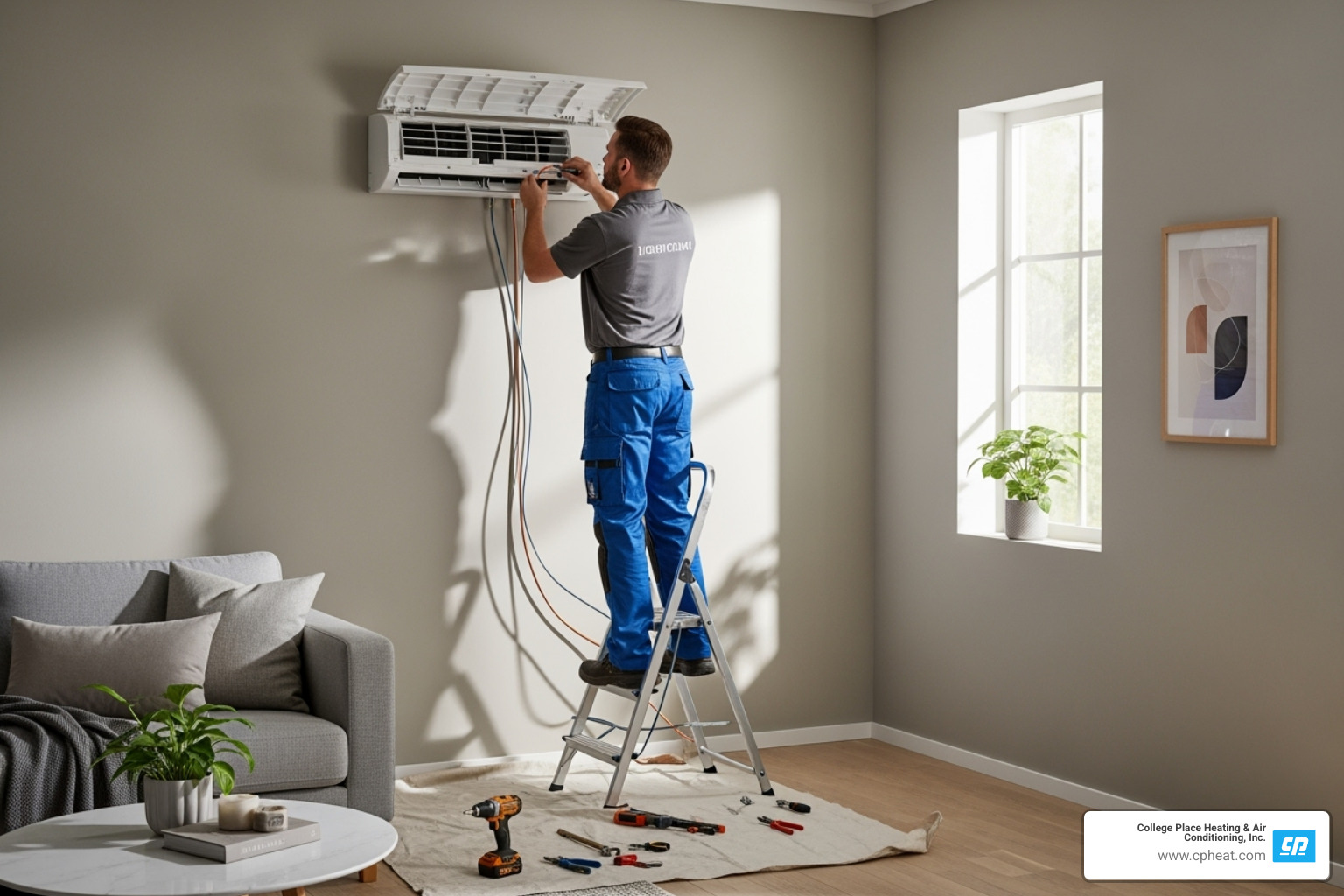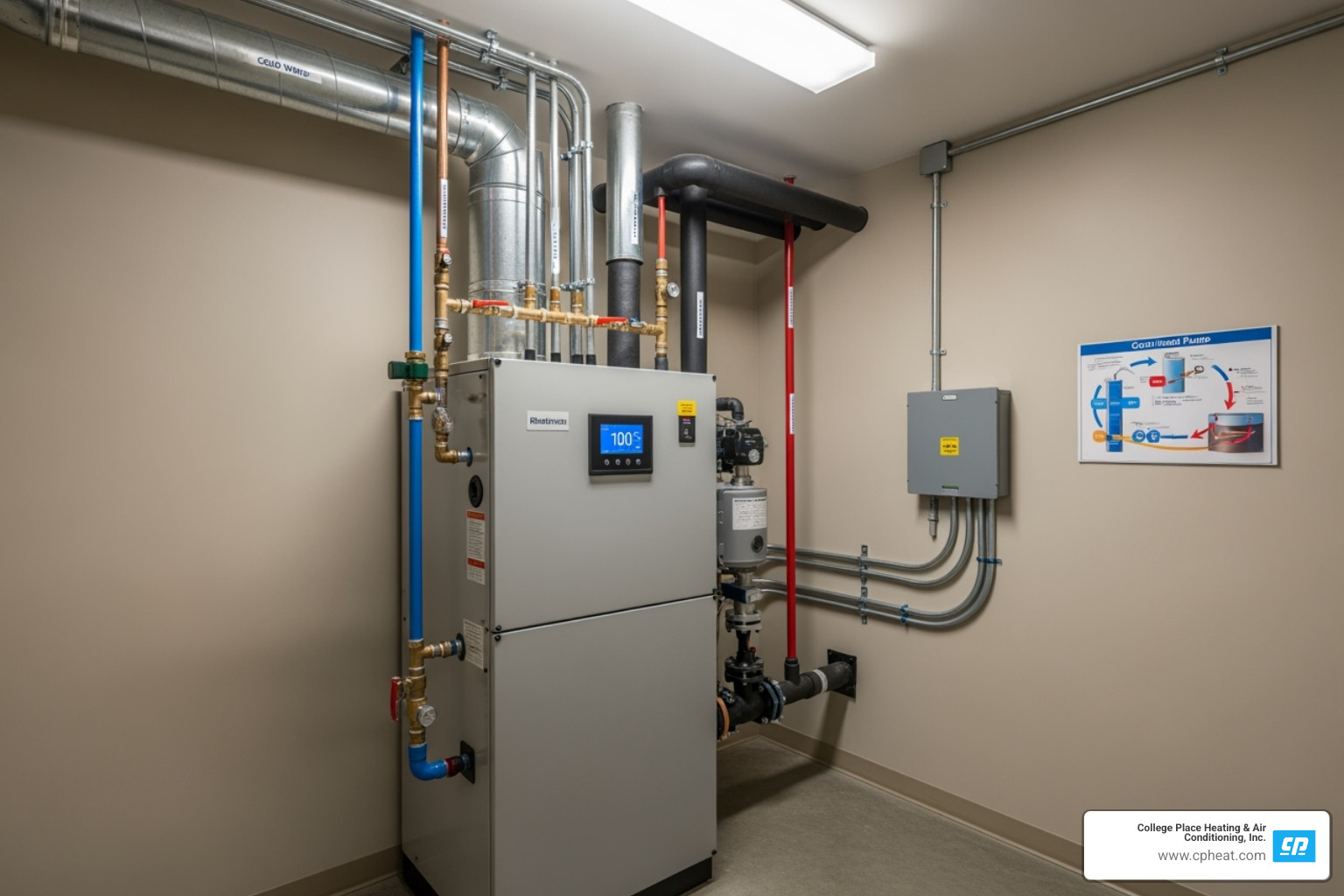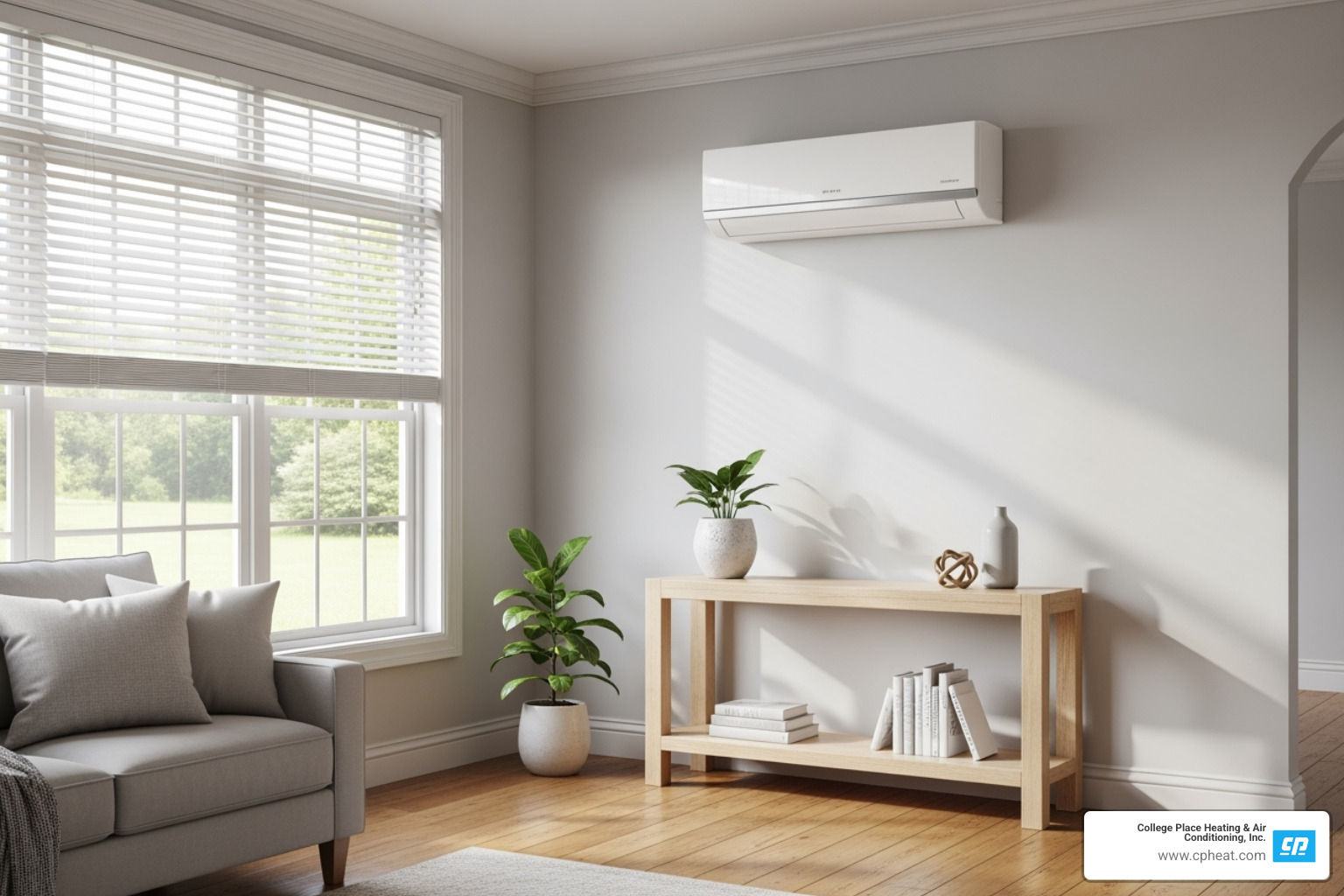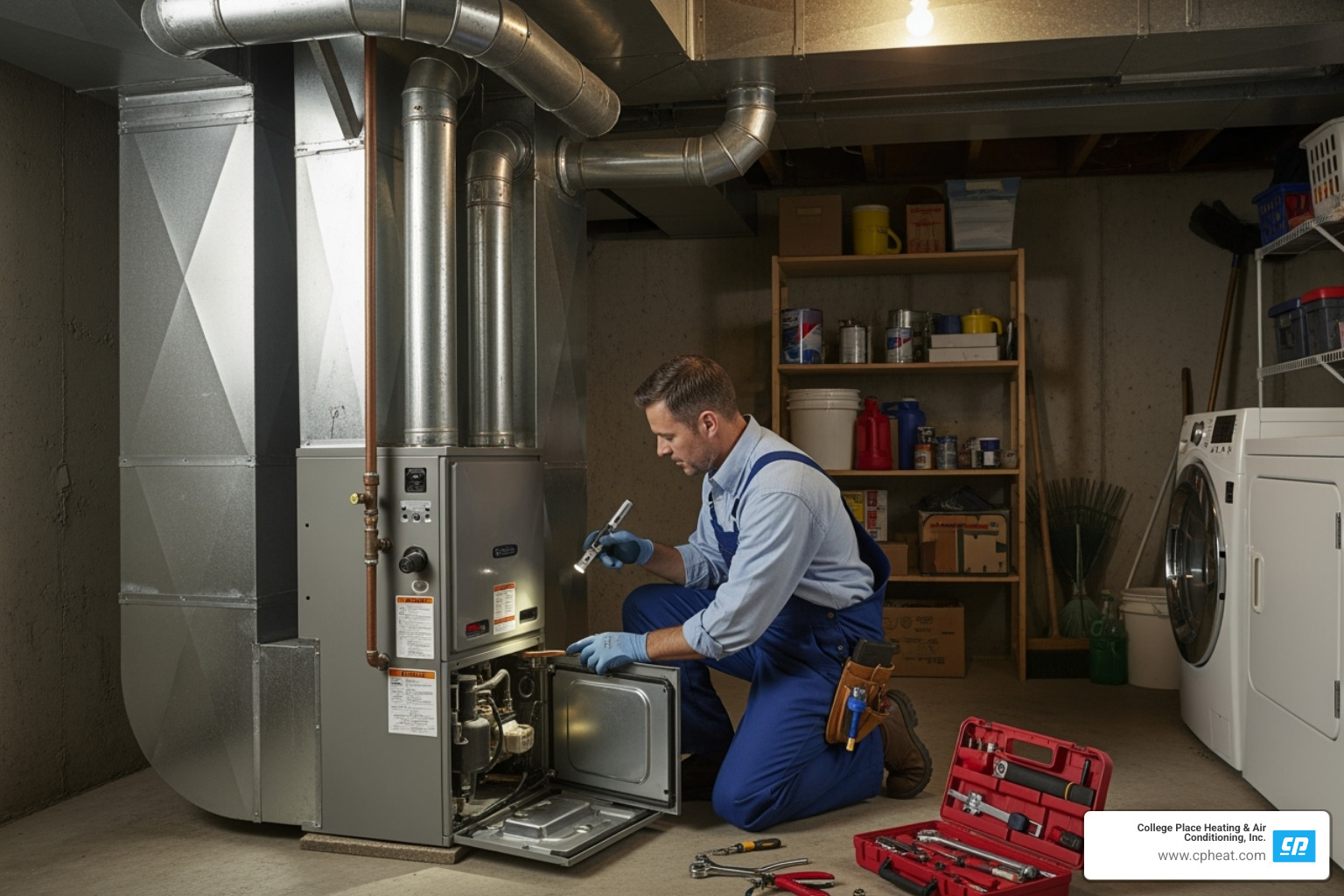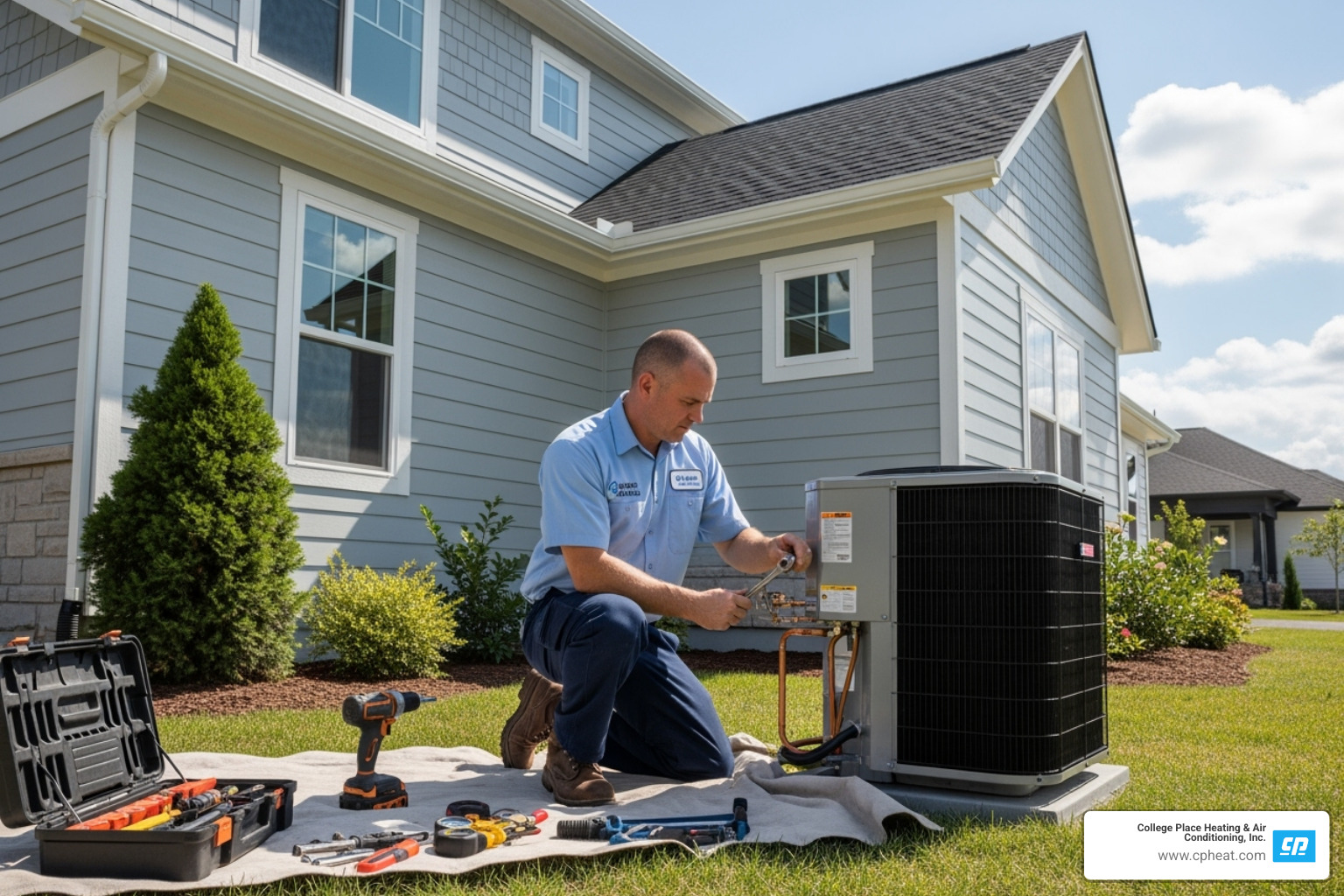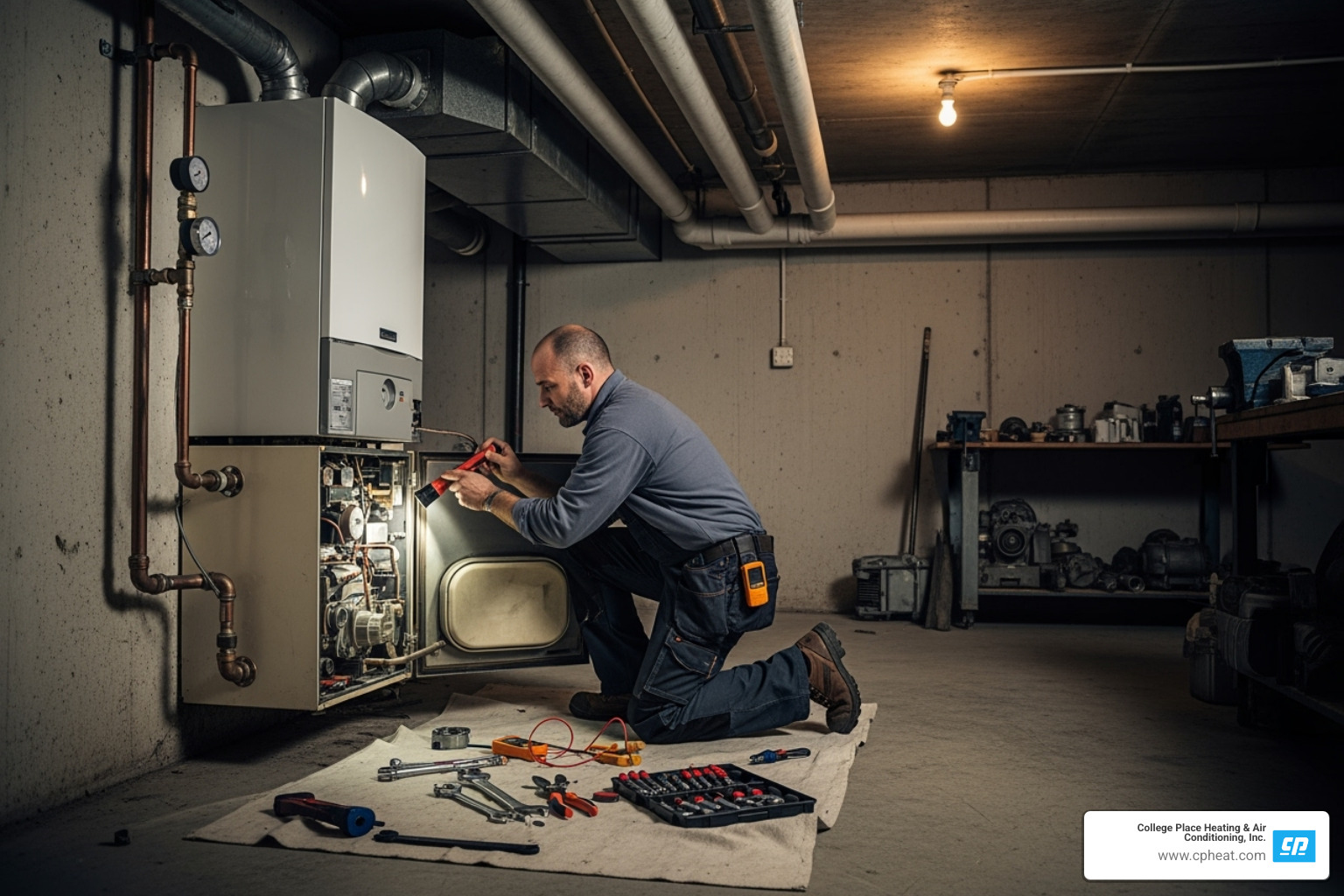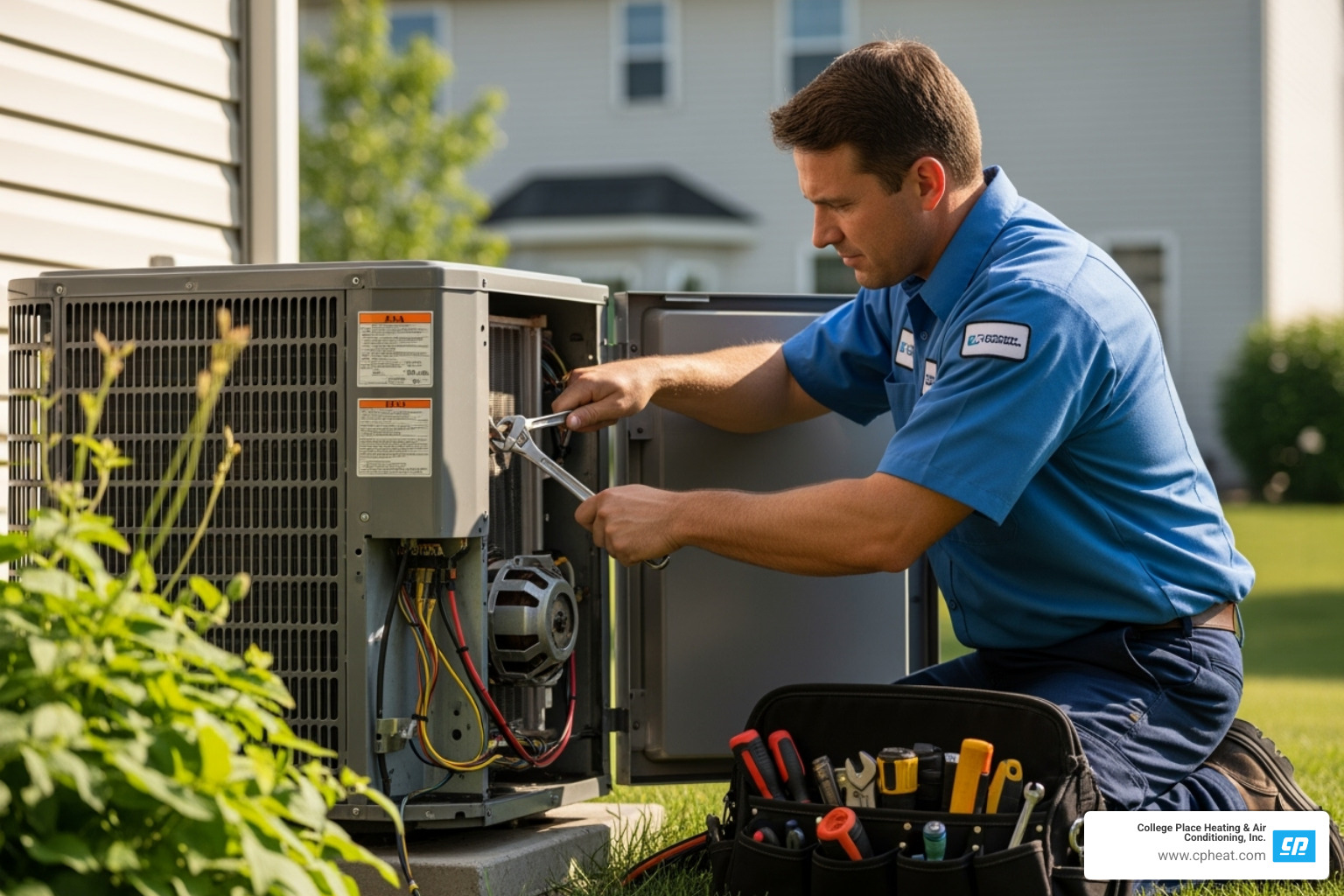Understanding Heat Pumps: The Smart Way to Heat and Cool Your Home
How does a heat pump work? A heat pump operates by transferring heat from one location to another using a refrigerant cycle. In winter, it extracts heat from outdoor air (even when cold) and moves it inside to warm your home. In summer, it reverses this process—pulling heat from indoors and releasing it outside to cool your home. This heat transfer method makes heat pumps 2-3 times more energy efficient than traditional heating systems.
Quick Answer:
- Winter Heating: Refrigerant absorbs heat from outside air → Compressor increases pressure and temperature → Heat releases inside your home
- Summer Cooling: Refrigerant absorbs heat from inside air → System reverses → Heat releases outside your home
- Key Difference: Heat pumps move existing heat rather than creating it by burning fuel
If you’re a homeowner in the Walla Walla Valley dealing with an aging furnace or skyrocketing energy bills, understanding how heat pumps work might change how you think about home comfort. Unlike traditional systems that generate heat by burning fuel or using electric resistance, heat pumps are all-in-one systems that provide both heating and cooling year-round.
The secret to their efficiency? They don’t create heat—they simply move it from one place to another. This fundamental difference means they use significantly less energy than conventional heating methods, which is why they’re becoming increasingly popular in our region.
Whether you’re considering replacing your current HVAC system or just curious about this technology, this guide will walk you through exactly how heat pumps work, why they’re so efficient, and whether they’re right for your home in College Place, Milton-Freewater, or the surrounding areas.
The Magic of Heat Transfer: How Does a Heat Pump Work?
Here’s where things get really interesting. How does a heat pump work its magic? It all comes down to a fundamental principle of physics: heat naturally flows from warmer places to cooler ones. What makes a heat pump so clever is that it can actually reverse this natural flow, moving heat where you want it to go.
Think about it this way—in winter, your heat pump pulls warmth from the cold outdoor air (yes, even freezing air contains heat energy!) and brings it inside your home. In summer, it does the opposite, pulling heat from your indoor air and dumping it outside. It’s essentially acting as a heat shuttle, moving thermal energy back and forth depending on what you need.
The secret ingredient that makes all this possible? A special fluid called refrigerant. This remarkable substance is designed to change between liquid and gas states very easily, and those phase changes are the key to the whole operation.
When refrigerant evaporates (turns from liquid to gas), it absorbs heat from whatever’s around it—making that area colder. When it condenses (turns from gas back to liquid), it releases that heat—making that area warmer. By controlling the pressure of the refrigerant, your heat pump can control exactly when and where these phase changes happen.
You’ve probably experienced this principle without realizing it. Ever notice how rubbing alcohol feels cool on your skin? That’s because it’s evaporating and absorbing heat from your body. Or how a can of compressed air gets cold when you spray it? That’s the refrigerant expanding and absorbing heat. Your heat pump uses these same principles, but in a continuous, controlled cycle.
This entire process is grounded in a fundamental law of physics—the second law of thermodynamics. What your heat pump does is create temperature differences that allow heat to flow in the direction you want it to go, providing comfort year-round.
The Science of the Refrigerant Cycle
Now let’s follow the refrigerant on its journey through your heat pump system. This continuous loop is called the refrigerant cycle, and it has four main stages that work together to move heat where you need it.
First comes evaporation. The refrigerant starts as a cold, low-pressure liquid flowing through a coil. As warmer air passes over this coil, the refrigerant absorbs that heat and begins to boil—just like water boiling on a stove, but at a much lower temperature. As it absorbs this heat energy, it transforms into a cool gas vapor. This is the heat-collecting phase.
Next is compression. The refrigerant gas moves into the compressor, which is basically the heart of your heat pump system. The compressor squeezes the gas, dramatically increasing both its pressure and temperature. Think of it like pumping up a bicycle tire—as you compress the air, it gets noticeably warmer. Now you have hot, high-pressure refrigerant gas that’s ready to give up its heat.
Then comes condensation. This hot gas flows into another coil where cooler air passes over it. Since the refrigerant is now hotter than the surrounding air, it releases its heat energy. As it cools down, it condenses back into a liquid—but it’s still under high pressure and relatively warm at this stage. This is the heat-delivery phase.
Finally, there’s expansion. The high-pressure liquid refrigerant passes through an expansion valve, which suddenly drops the pressure. When pressure drops quickly, temperature drops too—making the refrigerant very cold. This cold liquid is now ready to absorb heat again, and the whole cycle starts over.
This continuous dance of phase changes and pressure adjustments happens over and over, efficiently moving heat from one place to another without ever creating heat through combustion like a furnace would.
Key Components of a Heat Pump System
Understanding the parts that make up your heat pump system helps you see how everything works together. A typical system has two main units—one outside and one inside—connected by refrigerant lines.
The outdoor unit sits outside your home and contains a coil with a fan. Depending on whether you’re heating or cooling, this unit either collects heat from the outdoor air or releases heat into it. Even on a cold winter day, it’s busy extracting thermal energy from the outside air.
The indoor unit (often called an air handler) sits inside your home and also has a coil with a fan. This is where conditioned air gets distributed throughout your home via your ductwork. It’s the part that delivers the comfort you feel.
The compressor is the muscle of the system. It pressurizes the refrigerant, raising its temperature so it can effectively deliver heat where you need it. Without the compressor, the refrigerant wouldn’t have enough energy to do its job.
The coils (also called heat exchangers) are where the actual heat transfer happens. These are long, winding tubes with fins that maximize contact with the air. One coil is in your outdoor unit, and one is in your indoor unit.
Here’s where it gets really clever: the reversing valve is what makes your heat pump able to both heat and cool. This component changes the direction that refrigerant flows through the system, essentially swapping which coil absorbs heat and which one releases it. Flip this valve, and your heating system becomes a cooling system—or vice versa.
The expansion valve acts as a pressure-release point, dropping the refrigerant’s pressure and temperature so it’s ready to absorb heat again. And the refrigerant lines are simply the copper tubes that connect everything together, allowing the refrigerant to travel between your indoor and outdoor units.
All these components work together in harmony to give you efficient, year-round comfort. It’s a remarkably neat system once you understand what’s happening behind the scenes.
A System for All Seasons: Heating and Cooling Explained
The real genius of a heat pump isn’t just that it heats efficiently or cools effectively—it’s that it does both with a single system. If you’ve ever wished you could simplify your home comfort setup, a heat pump is your answer. No separate furnace and air conditioner taking up space and requiring separate maintenance schedules. Just one neat solution working year-round.
The secret to this versatility? That reversing valve we mentioned earlier. Think of it as a traffic director for your refrigerant, telling it which direction to flow. When your thermostat calls for cooling, the valve switches the refrigerant flow one way. When you need heat, it simply reverses direction. The same components, the same refrigerant, just working in opposite directions to keep you comfortable no matter what the Walla Walla Valley weather throws at you.
Your thermostat acts as the brain of the operation, monitoring your home’s temperature and signaling the heat pump when to switch modes. It’s a seamless process that happens automatically, maintaining that steady, comfortable temperature you set—whether it’s a sweltering July afternoon or a frosty January morning.
How a Heat Pump Works to Cool Your Home in Summer
When summer heat settles over the valley, your heat pump transforms into a powerful cooling machine. If you’ve used a traditional air conditioner before, the results feel familiar—but the heat pump accomplishes this cooling while maintaining impressive efficiency.
Here’s how a heat pump works in cooling mode: The indoor coil becomes the evaporator, and the refrigerant inside begins absorbing heat from your home’s warm air. As your air handler fan pulls warm air across these cold coils, the refrigerant literally drinks up the heat energy, evaporating from liquid into a cool gas in the process.
That heat-laden refrigerant gas then travels to the compressor, which squeezes it into a hot, high-pressure state. This superheated gas moves outside to the outdoor coil (now acting as the condenser), where it meets the cooler outdoor air. The refrigerant releases all that absorbed heat into the outside environment, condensing back into a liquid as it does so.
Finally, the liquid refrigerant passes through the expansion valve, which drops its pressure and temperature dramatically. Now cold again, it returns to the indoor coil ready to absorb more heat from your living space. This cycle repeats continuously, pulling warmth and humidity out of your home and depositing it outside.
As a bonus, heat pumps naturally remove moisture from your indoor air during this process, acting as dehumidifiers. That means you’re not just cooler—you’re more comfortable, even on those humid late-summer evenings.
How a Heat Pump Works to Heat Your Home in Winter
When temperatures drop and you need warmth, your heat pump doesn’t give up—it simply reverses course. This is where heat pumps really shine compared to traditional heating methods, and it’s why understanding how does a heat pump work in heating mode is so important.
Even when it feels freezing outside, there’s still heat energy in the air. (Yes, really! Even at 0°F, there’s thermal energy available.) The outdoor coil now becomes the evaporator, and the refrigerant flowing through it absorbs this ambient heat from the outside air. As it collects this energy, the refrigerant evaporates into a gas.
The compressor then works its magic, squeezing this gas and dramatically increasing both its pressure and temperature. We’re talking about refrigerant that’s now much hotter than your desired indoor temperature—hot enough to effectively warm your entire home.
This superheated refrigerant flows to your indoor coil, which now acts as the condenser. Here’s where the payoff happens: as your air handler blows air across these hot coils, the refrigerant releases its concentrated heat into your living space. The warmth circulates through your ducts and vents, keeping you cozy while the refrigerant condenses back into a liquid.
That liquid then passes through the expansion valve, dropping in pressure and temperature, and heads back outside to gather more heat. The cycle continues, efficiently extracting warmth from the outdoor environment and delivering it inside where you need it.
It’s a remarkable process that essentially reverses how your furnace works. Instead of burning fuel to create heat, your heat pump simply moves existing heat from one place to another—which is why it’s so much more efficient. For a deeper look at why this matters for your home and your wallet, check out our detailed guide on what are the advantages of purchasing a heat pump.
The Efficiency Advantage: Why Choose a Heat Pump?
If you’ve been watching your energy bills climb in the Walla Walla Valley, you’re not alone. One of the most compelling reasons homeowners are making the switch to heat pumps is their remarkable ability to slash energy costs while keeping homes comfortable year-round. But how does a heat pump work to achieve such impressive efficiency? The secret lies in its fundamental approach to heating and cooling.
Unlike traditional systems that burn fuel or convert electricity directly into heat, a heat pump simply moves heat from one place to another. It’s the difference between creating something from scratch versus relocating something that already exists—and that difference translates into significant energy savings for you.
How a Heat Pump Saves Energy
Think about a traditional furnace for a moment. Whether it’s burning natural gas, propane, or using electric resistance coils, it’s creating heat through combustion or direct conversion. That process requires a lot of energy because you’re generating warmth from a fuel source.
A heat pump takes a completely different approach. Instead of creating heat, it acts more like a heat shuttle service. In winter, it extracts heat energy from the outdoor air (yes, even when it’s cold outside) and brings it inside. In summer, it reverses direction and carries heat from your home to the outdoors. The compressor and fans use electricity to power this transfer process, but they’re not creating the heat itself.
Here’s where the efficiency really shines: for every unit of electricity a heat pump uses, it can move two to three units of heating or cooling energy. That means a well-installed heat pump can be more than 300% efficient. If that sounds impossible, it’s not converting energy—it’s transferring it. It’s like using a small amount of energy to carry a much larger amount of thermal energy from point A to point B.
This exceptional performance is why you’ll often see the ENERGY STAR label on quality heat pump systems. These units meet strict efficiency guidelines set by the U.S. Environmental Protection Agency, giving you confidence that you’re choosing a system that will help reduce both your carbon footprint and your monthly utility bills. For more detailed information on heat pump efficiency standards, you can visit Heat Pump Systems from Energy.gov.
In practical terms, your heat pump will typically consume between 6,176 to 10,244 kilowatt hours (kWh) annually, depending on factors like your home’s size, insulation quality, local climate, and how efficiently the system was installed. In moderate climates like ours in the Walla Walla Valley, heat pumps operate at their peak efficiency, delivering substantial savings compared to traditional fuel-burning systems or inefficient electric baseboards.
Advantages and Disadvantages of Heat Pumps
Before you make any decision about your home comfort system, it’s wise to look at the complete picture. Heat pumps offer tremendous benefits, but like any technology, they have considerations you should understand.
The advantages are impressive. You get both heating and cooling in a single system, which means one installation, one maintenance schedule, and one piece of equipment to manage. The energy efficiency we just discussed translates into lower utility bills month after month. Heat pumps also provide consistent, even comfort without the temperature swings you might experience with a furnace that cycles on and off. And if you’ve ever been startled awake by a furnace kicking on, you’ll appreciate how quietly modern heat pumps operate.
On the flip side, there are some practical considerations. In extremely cold weather—we’re talking well below freezing for extended periods—traditional heat pump models may need supplemental heat to maintain comfort. This is less of a concern with modern cold-climate models, which we’ll discuss in the next section. The upfront investment for a heat pump system is typically higher than a basic furnace, though many homeowners find the energy savings make up for this over time. And like any mechanical system, heat pumps can occasionally need repairs. If you ever experience issues, our team provides expert heat pump repair services to get your system running smoothly again.
| Heat Pump Pros | Heat Pump Cons |
|---|---|
| Single system for heating and cooling | May need supplemental heat in extreme cold |
| 2-3 times more efficient than traditional systems | Higher upfront investment than basic systems |
| Consistent, even comfort throughout your home | Occasional maintenance and repairs needed |
| Quiet operation | Performance varies with outdoor temperature |
| Lower monthly utility bills | – |
| Reduced carbon footprint | – |
The bottom line? For most homeowners in the Walla Walla Valley, the advantages far outweigh the drawbacks, especially when you work with experienced professionals who can properly size and install your system for optimal performance.


